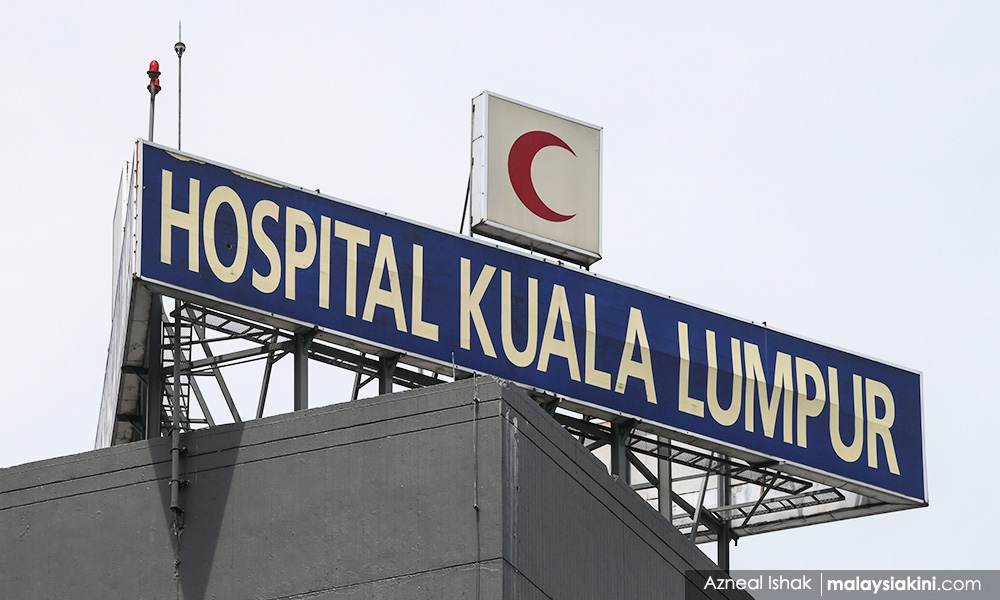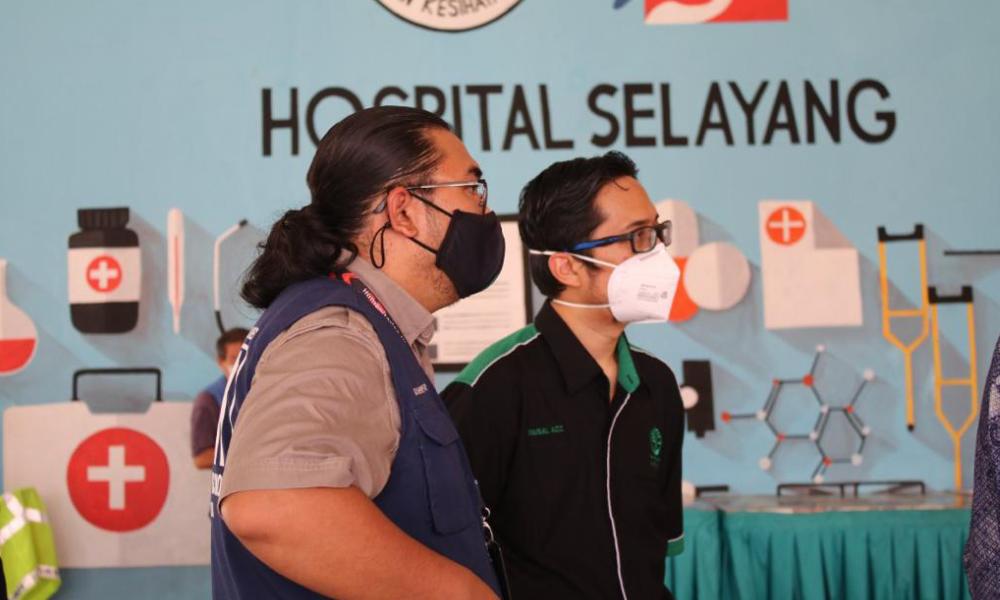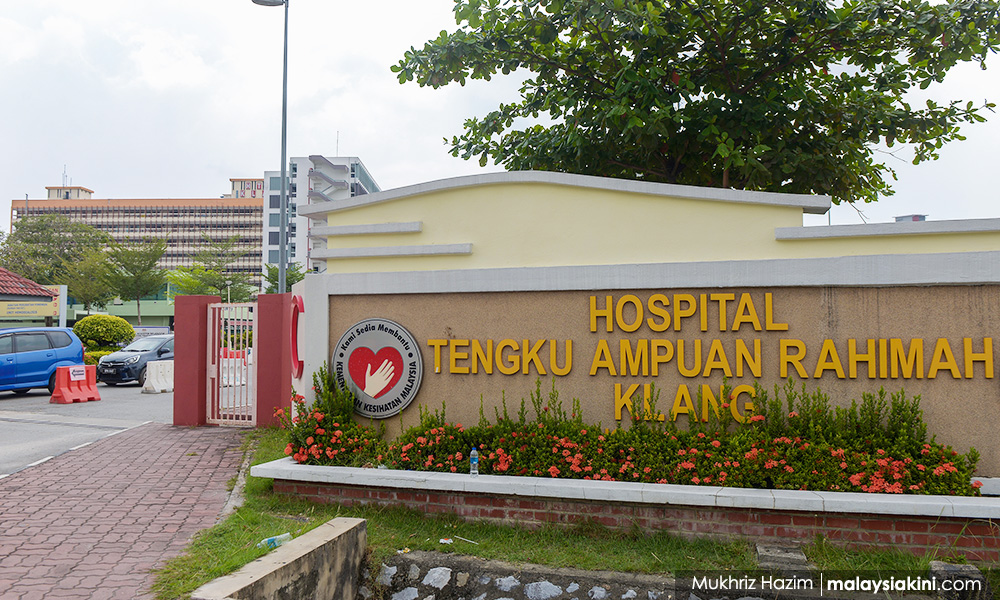An ongoing relocation for permanent placement of 4,200 medical officers by July 31 is expected to impact major public hospitals, according to health news portal CodeBlue.
This comes as nearly a quarter of them - about 1,000 - are currently based at hospitals in Kuala Lumpur and Selangor.
CodeBlue quoted a source from the Kuala Lumpur Hospital (HKL) who indicated the facility is expected to lose 300 medical officers, a majority said to be relocated to Sabah and Sarawak.
In return, the source reportedly said HKL - the country’s largest tertiary hospital with 53 departments and units - is only expected to receive 100 medical officer placements via the eHousemen system.
The report also quoted another HKL doctor identified as Dr Daniel, a pseudonym used due to a civil servant gag order.
He said instead of looking at the high concentration of government doctors in the Klang Valley compared to other states, an important indicator is the “doctor-to-patient ratio”.

“I think we need to look at the doctor-to-patient ratio. We’re not just talking about serving local residents, but foreigners as well.
“At HKL, just in the emergency department, we have around 100 medical officers, and some might argue that it’s already a substantial number.
“In total, HKL has nine to 10 emergency zones that need attention.
“If the number of medical officers that we have now is ‘big’, we won’t be doing double or even triple shifts,” he said.
Losing more doctors than gaining
In Selangor, CodeBlue cited preliminary Health Ministry (MOH) data that stated Selayang Hospital is expected to lose the most number of contract doctors with 120 medical officers up for permanent placements.

This is followed by Serdang Hospital (107), Sungai Buloh Hospital (104), Tengku Ampuan Rahimah Hospital (HTAR) in Klang (93), and Ampang Hospital (55).
At Selayang Hospital, CodeBlue said doctors reported that the hospital is not expecting the arrival of any new officers, as it was not included as an option in the eHousemen system accessible from June 9 to 24.
The reason for Selayang Hospital’s omission is unknown, according to the portal.
Other impacted facilities include Shah Alam Hospital (45), Kajang Hospital (40), Banting Hospital (36), Cyberjaya Hospital (17), Tanjong Karang Hospital (11), Tengku Ampuan Jemaah Hospital (HTAJ) in Sabak Bernam (7), Kuala Kubu Bharu Hospital (5), and Gombak Orang Asli Hospital (2).
According to CodeBlue, doctors at HKL and Selayang Hospital have raised strong concerns about the potential increase of workload on existing staff who already contend with burnout and frequent resignations.

This was despite restrictions on reduced service as most Klang Valley government hospitals also serve as referral centres for specific diseases, with HKL being the premier national referral centre.
Aside from hospitals, CodeBlue reported that another 59 medical officers now serving in public health clinics in Selangor are also involved in the relocation exercise.
Of the expected transfers from Klang Valley health facilities, CodeBlue said Sarawak and Sabah ranked as top destinations for permanent placements, with 193 out of the total 642 medical officers from Selangor hospitals.
A significant number is also headed to Pahang, aside from doctors given the option to be permanently placed in their current hospitals.
‘Excess’ doctors in Klang Valley
In Selangor, the portal reported that Hospital Tuanku Ampuan Rahimah Klang (HTAR) has at least 43 medical officers who retained their positions at the hospital.

In contrast, it reported that no officers up for permanent placement in Selayang Hospital and Sungai Buloh Hospital had the option to stay, despite both hospitals facing one of the heaviest outflows of manpower.
Explaining the movements, CodeBlue quoted a senior doctor saying the relocation of many Klang Valley medical officers to other states is driven by a purported “excess” of government doctors in the region, combined with the expansion of services in other states.
“What happens is the MOH will assess the requirements of all states, including the number of medical officers needed.
“We have to remember that a lot of services across all medical disciplines have expanded, all of which require more medical officers,” said Dr Lokman (pseudonym).
The doctor said such expansions include accommodating requests from smaller district hospitals to be designated as specialist hospitals, for example in Cameron Highlands and Pekan in Pahang, as well as in several Sabah districts.
Work first, appeal later
In a related development, the Malaysian Medical Association (MMA) has advised doctors reportedly refusing posts in Sarawak to go to work first and appeal later.
In doing so, its president Dr R Muruga Raj reminded doctors of their duties and responsibilities, as well as the rules and regulations in their appointments.

“The MMA urges the doctors concerned to accept the offer and report to work there.
“An appeal can be sent but first accept the post and report for duty,” he said in a statement today.
Muruga was responding to Deputy Health Minister Lukanisman Awang Sauni saying over 200 doctors offered contract positions to serve in Sarawak have turned down the offer or failed to report to work.
According to the Borneo Post, the doctors were among 800 health practitioners offered to work in the state.
While acknowledging that Sarawak is in need of more doctors, Muruga also urged the Health Ministry to consider appeals made by doctors with valid reasons to not accept their posts.
“200 doctors or 25 percent is a high rejection rate. However, we view 75 percent (600 doctors) accepting their posts as encouraging news.
“The MMA takes note of these efforts by the Health Ministry and JPA (Public Service Department) in creating these posts and welcomes the move.”
Previously, Health Minister Dr Zaliha Mustafa said over 1,000 medical officers involved in the nationwide relocation exercise appealed to stay in their current location. - Mkini




No comments:
Post a Comment
Note: Only a member of this blog may post a comment.